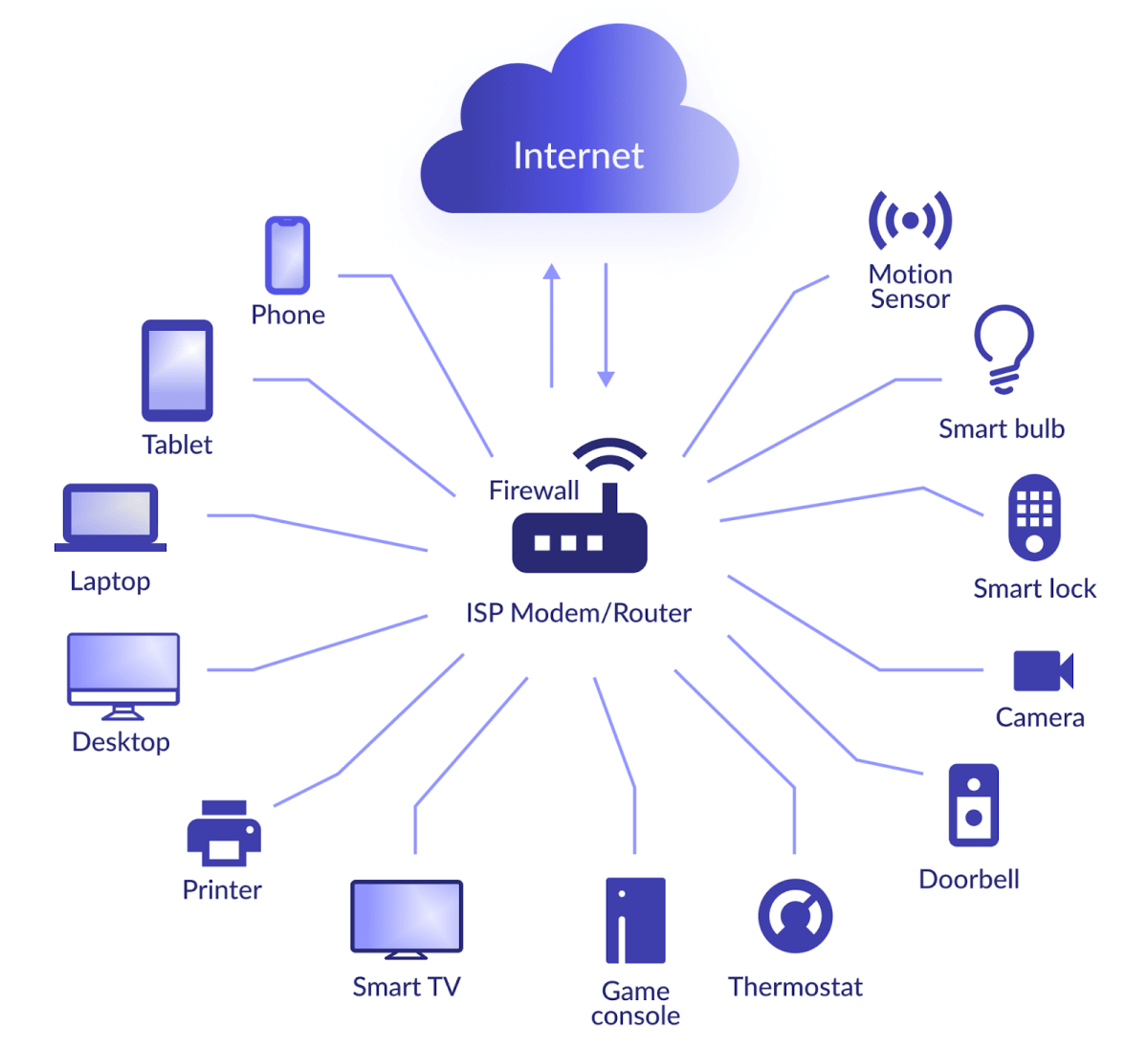Managing IoT devices behind a firewall is a critical task for modern network administrators as the proliferation of connected devices continues to grow exponentially. With billions of IoT devices deployed globally, ensuring secure communication and control is no longer optional but essential. As companies increasingly adopt IoT solutions, they must address the challenge of maintaining robust security protocols while enabling seamless device management. In this article, we will delve into the complexities of managing IoT devices behind firewalls, offering practical strategies, expert advice, and actionable tips to help you secure your network infrastructure effectively.
The rise of IoT technology has revolutionized industries, from manufacturing and healthcare to smart homes and retail. However, the integration of IoT devices into enterprise networks poses unique security challenges. Traditional firewalls, designed to protect against external threats, often struggle to handle the intricacies of IoT communication. This creates vulnerabilities that malicious actors can exploit. Therefore, understanding how to manage IoT devices behind firewalls is crucial for safeguarding sensitive data and maintaining operational integrity.
This guide is tailored for IT professionals, network administrators, and decision-makers who seek to enhance their network security posture. By addressing key considerations such as device authentication, data encryption, and access control, we aim to equip you with the knowledge and tools necessary to implement a secure IoT infrastructure. Our goal is to provide actionable insights that will empower you to manage IoT devices behind firewalls confidently, ensuring both security and efficiency.
Read also:Unveiling The Charm Of Surfing Goat Dairy Kula A Maui Paradise
Why Is It Important to Secure IoT Devices Behind Firewalls?
In today's interconnected world, IoT devices are integral to business operations, offering unprecedented opportunities for automation and data collection. However, these devices also introduce significant security risks if not properly managed. Firewalls serve as the first line of defense against unauthorized access, but they must be configured specifically to accommodate the unique communication patterns of IoT devices. Without proper configuration, firewalls can inadvertently block legitimate traffic or fail to detect malicious activity, leaving your network vulnerable.
Securing IoT devices behind firewalls is essential for several reasons. First, it helps prevent unauthorized access to sensitive data transmitted between devices and servers. Second, it ensures compliance with industry regulations and standards, which is increasingly important as governments impose stricter cybersecurity requirements. Lastly, it enhances the overall reliability and performance of your network by reducing the risk of disruptions caused by cyberattacks.
What Are the Key Challenges in Managing IoT Devices Behind Firewalls?
Managing IoT devices behind firewalls presents several challenges that require careful consideration. One of the primary issues is the diversity of communication protocols used by IoT devices. Unlike traditional IT devices, which typically rely on standardized protocols like HTTP or TCP/IP, IoT devices often use proprietary or specialized protocols that may not be recognized by standard firewalls. This can lead to configuration difficulties and potential security gaps.
Another challenge is the sheer volume of devices that need to be managed. As the number of IoT devices grows, so does the complexity of managing them. Network administrators must ensure that each device is properly authenticated, authorized, and monitored, which can be a daunting task without the right tools and processes in place. Additionally, the dynamic nature of IoT networks, where devices may join or leave the network frequently, adds another layer of complexity to the management process.
How Can You Ensure Seamless Communication Between IoT Devices and Firewalls?
To ensure seamless communication between IoT devices and firewalls, it is essential to adopt a multi-layered approach to security. This involves implementing robust authentication mechanisms, such as digital certificates or OAuth tokens, to verify the identity of each device. Additionally, using encryption protocols like TLS/SSL can help protect data in transit, making it more difficult for attackers to intercept or tamper with communications.
Another effective strategy is to segment your network into distinct zones, with firewalls controlling traffic between them. This approach, known as micro-segmentation, allows you to apply different security policies to different groups of devices based on their function and risk profile. By isolating IoT devices from other parts of the network, you can reduce the attack surface and limit the potential impact of a security breach.
Read also:Unveiling The Charm Of Camden Apartments In Fairfax Va
What Are the Best Practices for Managing IoT Devices Behind Firewalls?
Implementing best practices for managing IoT devices behind firewalls is critical for ensuring both security and operational efficiency. Here are some key strategies to consider:
- Regularly update firewall rules to reflect changes in your IoT infrastructure.
- Use network segmentation to isolate IoT devices from other network segments.
- Implement strong authentication and authorization mechanisms for all devices.
- Monitor device activity continuously to detect and respond to anomalies quickly.
How Can You Optimize Firewall Rules for IoT Devices?
Optimizing firewall rules for IoT devices involves striking a balance between security and functionality. To achieve this, you should start by identifying the specific communication requirements of each device and configuring the firewall accordingly. This may involve creating custom rules for certain protocols or ports, as well as defining exceptions for trusted devices or services.
It is also important to regularly review and update your firewall rules to ensure they remain relevant and effective. This includes removing outdated or redundant rules and adjusting existing ones to accommodate changes in your IoT environment. By maintaining a well-organized and up-to-date set of firewall rules, you can minimize the risk of security breaches while ensuring smooth operation of your IoT devices.
What Tools Are Available to Help Manage IoT Devices Behind Firewalls?
A variety of tools and platforms are available to assist with managing IoT devices behind firewalls. These include:
- Network Monitoring Tools: Provide real-time visibility into device activity and help detect potential security threats.
- Device Management Platforms: Offer centralized control over device configuration, updates, and security settings.
- Firewall Management Solutions: Enable efficient configuration and maintenance of firewall rules and policies.
Managing IoT Device Behind Firewall: A Step-by-Step Guide
Managing IoT devices behind firewalls requires a systematic approach that addresses all aspects of network security. Here is a step-by-step guide to help you get started:
- Conduct a thorough inventory of all IoT devices in your network.
- Assess the communication requirements of each device and configure the firewall accordingly.
- Implement strong authentication and encryption mechanisms for secure device communication.
- Segment your network into distinct zones to isolate IoT devices from other network segments.
- Monitor device activity continuously and respond promptly to any suspicious behavior.
Conclusion: The Future of Managing IoT Devices Behind Firewalls
As the IoT landscape continues to evolve, the need for effective strategies to manage IoT devices behind firewalls will only grow more critical. By adopting best practices, leveraging advanced tools, and staying informed about emerging trends and technologies, you can ensure the security and reliability of your IoT infrastructure. Remember, the key to success lies in maintaining a proactive approach to security and continuously adapting to the changing threat landscape.
How Can You Stay Ahead of Emerging Threats in IoT Security?
Staying ahead of emerging threats in IoT security requires a commitment to ongoing education and vigilance. This includes staying informed about the latest developments in cybersecurity, participating in industry forums and conferences, and collaborating with other professionals in the field. By building a strong network of peers and experts, you can gain valuable insights and share best practices that will help you manage IoT devices behind firewalls more effectively.
Final Thoughts on Managing IoT Device Behind Firewall
In conclusion, managing IoT devices behind firewalls is a complex but essential task that demands careful planning and execution. By following the strategies and recommendations outlined in this article, you can enhance the security and performance of your IoT infrastructure, protecting your organization from potential threats and ensuring the successful deployment of IoT solutions. Remember, the key to success lies in maintaining a proactive and adaptive approach to security, embracing innovation, and continuously improving your processes and technologies.
Table of Contents
- Why Is It Important to Secure IoT Devices Behind Firewalls?
- What Are the Key Challenges in Managing IoT Devices Behind Firewalls?
- How Can You Ensure Seamless Communication Between IoT Devices and Firewalls?
- What Are the Best Practices for Managing IoT Devices Behind Firewalls?
- How Can You Optimize Firewall Rules for IoT Devices?
- What Tools Are Available to Help Manage IoT Devices Behind Firewalls?
- Managing IoT Device Behind Firewall: A Step-by-Step Guide
- How Can You Stay Ahead of Emerging Threats in IoT Security?
- Final Thoughts on Managing IoT Device Behind Firewall
- Conclusion: The Future of Managing IoT Devices Behind Firewalls


